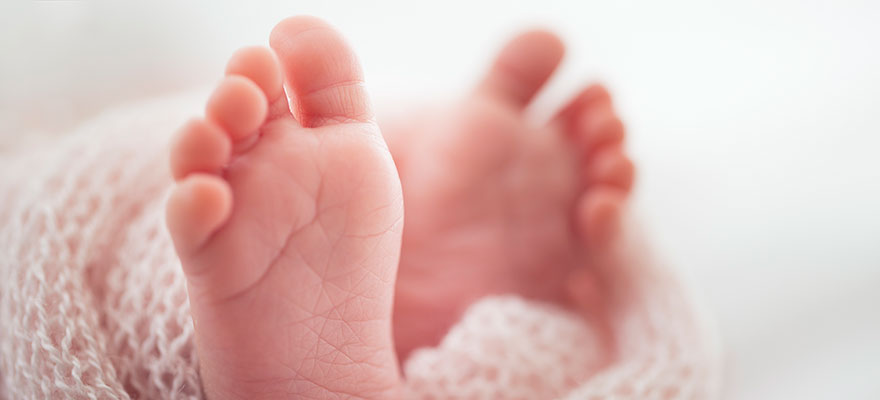Vaginal Birth After Cesarean
- Fall 2019

Healthy People 2020, a federal government program, has a goal to reduce caesarean births nationwide. C-sections account for 11% of births at Brookings Health System, significantly less than both the South Dakota (24.5%) and national (32.0%) rates. One way Brookings Health curtails caesarean deliveries: offering mothers with a previous C-section a trial of labor after caesarean.
The need for a C-section often doesn’t become obvious until labor is underway. It may be a safer way to deliver a baby than a vaginal delivery in cases where labor stalls, the baby is in distress or in an abnormal position, or there’s a problem with the placenta.
Many mothers feel mixed emotions after a caesarean: joy from having a healthy baby and disappointment from missing out on a unique experience. However, just because a mother has given birth once by C-section doesn’t mean she needs to give birth again by C-section.
“The thinking used to be, ‘once a C-section, always a C-section,’” said Obstetrics Director Mary Schwaegerl. “However, evidence-based research shows there are significant health advantages to mothers who try to labor and deliver vaginally after a caesarean delivery.”
Women who achieve a successful vaginal birth after caesarean delivery (VBAC) avoid major abdominal surgery, meaning they also avoid risks such as infection, heavy bleeding, anesthesia reactions, blood clots, and surgical injuries to the bowel or bladder. They also have a shorter recovery period after birth and their babies avoid breathing complications and possible surgical injury.
In addition, they avoid risks association with multiple C-sections, including potential placental problems, heavy bleeding and possible need for hysterectomy.
While the American College of Obstetricians and Gynecologists says a trial of labor after caesarean leading to VBAC is a safe option for most women, not every woman is a candidate. Mothers who are less likely to attain a successful VBAC will have a combination of factors. These may include increased maternal age, gestation over 40 weeks, maternal obesity, preeclampsia, short interval between pregnancies, a physically large baby and a recurrent reason for the initial caesarean.
“While the best predictor of a successful VBAC is a prior vaginal birth and labor that starts spontaneously, a single one of the contraindications doesn’t exclude a woman from trying VBAC delivery,” said Schwaegerl. “It’s a decision an expectant mother should make with her OB-GYN.”
For those women who try labor after a caesarean, Brookings Health’s OR team is on call to perform an emergency C-section if complications arise.
“First and foremost, we want a safe delivery for both the mother and baby,” said Schwaegerl.
For women who have a successful VBAC, they often feel fulfillment from experiencing a vaginal delivery plus the bliss of a new baby.
Learn more about Brookings Health’s labor and delivery services at brookingshealth.org/OB.

